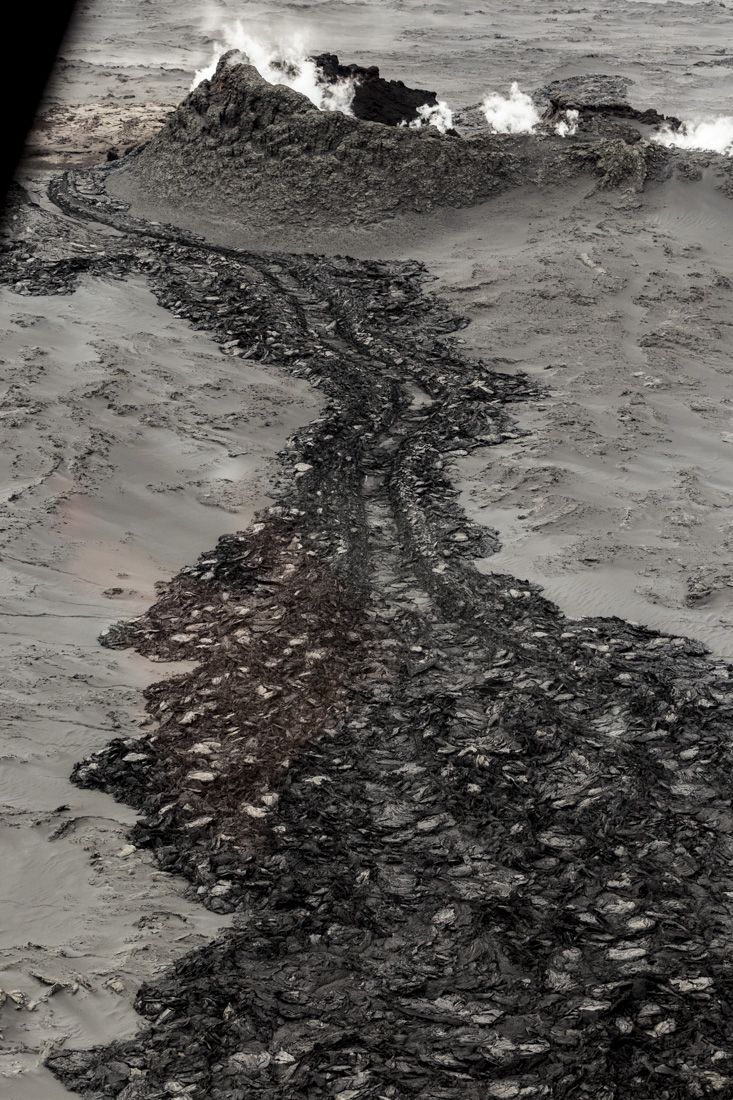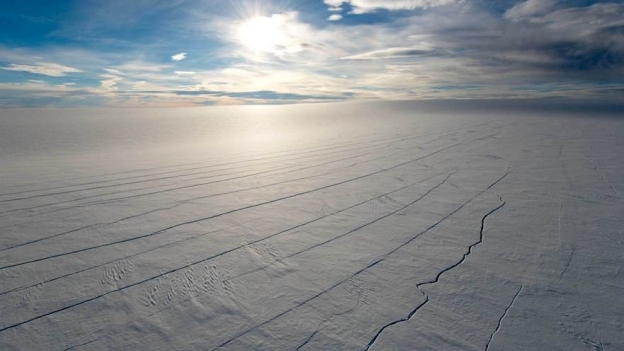First we had what seemed to be a subglacial eruption, but turned out to most likely be magma hitting a groundwater pocket. Then we had sigkatlar indicating a subglacial eruption, but whatever caused them stopped. But then last night, we finally had it - honest to god, visible lava fountains. An eruption!
And now it's over. So pack up your bags, thanks for reading, and.. wait... what's that? Nothing has changed?
Nope. The Bárðarbunga system has hardly even noticed these little "leaks" and is holding forward accumulating magma and ripping up rock.
But at least she's given us lots of pretty pictures. :) More Eldfjallavakt after the fold.
(I often feel like Bárðarbunga has gotten into a predictable routine and I can start reducing the frequency of my articles. So far, however, almost every time she does that, she turns around and throws a new element into the mix. That said, I'm hopeful that she'll give us a bit of a break and I can just write minor updates to existing diaries until the next ball drops!)
As we know know from yesterday, Bárðarbunga gave us "first lava" yesterday with its minor eruption on Holuhraun, just north of Dyngjujökull:

(Translations: sporður = foot of the glacier; sprungur = fissures; sprungsvæði = rifting zone; eldstöð = active volcanic center. Picture is 7.68 kilometers wide.)

The eruption lasted for only a few hours before turning to a steam eruption, and the steam is now dying off. One scientist describing the eruption called it a half-assed accident on the part of the dike, in that it's running so shallow in the area that it "leaked" a bit on the surface.
See the people in the background? You may have to open the pic in a new window to see them.

That's a little eruption?

That's little?

That's little?
Yes.
No volume estimates have been released yet but the effect on the volcanic system has been practically nonexistent. Quake activity remains unaffected, with the continuous intense rumbling in the dike as the magma flows in and regular powerful quakes in Bárðarbunga's caldera.
From all appearances, like what melted the sigkatlar in the glacier, what we have here is just a paper cut to Bárðarbunga.
But it was pretty. Say hello to the newest part of Iceland.

Some more pics:

(Above: Helluhraun (pahoehoe lava) mixed with apalhraun (a'a lava).)

(Above: One of the central craters)

(Above: Steam activity is still present but dying down. Nonetheless there will likely continue to be steam for quite some time.)

(Above: More steaming craters.)

(Above: The low viscosity of the lava allowed channels to carry it away from the craters)

(Above: The lava seeped out atop lava fields from historic flows of Bárðarbunga that were orders of magnitude larger)

(Above: Scientists walk to the craters across the lava field.)

(Above: Fissures that didn't open up run parallel to the craters which did.)

(Above: Massive networks of fissures trace out the path of the dike underneath, reaching out from under the glacier, halfway to Askja.)
In other news, the flight restrictions have been removed over the region. Which is a little late for Ómar Ragnarsson, Iceland's most famous daredevil-pilot-photographer-ecoactivist who filmed the video of the steam eruptions that we saw the other day, who was in violation of Icelandic airspace restrictions. He says it was an accident, that he was already on his way when the restrictions were imposed and that ATC didn't alert him.
The quake storm is the most powerful ever recorded in Vatnajökull and has now been underway for two weeks. There have been more quakes in these two weeks than normally strike quake-prone Iceland in an entire year - and as I noted in a previous diary, the figures are even more impressive when you look at the biggest of the quakes.
The Icelandic phrase for "we'll find out" is "það kemur í ljós" - that is, "it will come into (the) light". The magma is no longer staying quietly underground, but how much will erupt, when, how explosively, with what level of flooding or gas or ash, we can't say at this point (this will take a long time to play out). But sooner or later, more is almost certainly going to come out into the light of day.
Það kemur í ljós.
Minor update, 12:45 30 august: Significant quake activity last night, including a 5.4, which I believe is the most powerful yet. Here's a pic of the rifting in Bárðarbungajökull, the glacier over Bárðarbunga:

Update, 3:30 30 august: Link. This is from Magnús Tumi, who's been sort of a "moderate" in his analysis of the situation.
Tenfold larger eruption than in Holuhraun
The eruption that occurred in Barðarbunga on Saturday a week ago was tenfold larger than that which occured on Holuhraun late friday night. This is according to Magnús Tumi Guðmundsson, geophysicist. An eruption in Bárðarbunga is now considered to be more likely than before, after the quakes of the previous day.
The Scientific Committee of the National Protective Services convened this morning to go over the situation in the region around Bárðarbunga. The earthquakes continue in the Bárðarbunga region this evening and more than 700 earthquakes have been measured in the region since midnight. Most activity has been in a 15 kilometer long region with its center at the foot of Dyngjujökull. The largest quake, 5.4, was on the southern ridge of the Bárðarbunga caldera at 7:03..
Eruption in Bárðarbunga a higher probability than before
Magnús Tumi Guðmundsson, geophysicist, was in a meeting with the Scientific Committee. H e says that in itself there have been no major changes in the previous day. By far most quakes hav been in the 15 kilometer long area that had the eruption. Later there were larger quakes in Bárðarbunga like there have been in recent days and it is considered to be a reaction to the magma searching around underneath.
An eruption in Bárðarbunga is now considered to be a higher probability than before.
"We shall say that it's come into the status assessment," he says. "There are three things come come into it: that small eruption which ocurred in Holuhraun changed nothing about the activity in its own right, it keeps going, and since then it's become clear due to our investigations which we've done from the air that there was a small eruption on the southeastern side of Bárðarbunga. The most likely time for it was on Saturday a week ago when the tremor activity was measured but no sign was seen on the surface." (Ed: So the met office was right!)
Magnús Tumi suggests that in the area the ice is very thick, 400 to 600 meters, so it takes time for visible signs to become apparent.
"We've had two small eruptions, but that which was up in Bárðarbunga was however ten times larger than the one on Holuhraun," he says. "And if the eruptive history of Bárðarbunga is looked it, it's clear that it's more common for her to erupt under the glacier, presumably to the sides."
Serious eruption in 1717
Magnús Tumi says that in light of this we should consider it a possiblity that there will be a more serious eruption in Bárðarbunga if the activity keeps going. He adds though that there is also the possibility that the activity dies out without a larger eruption occurring.
"Of course it'll die out eventually, but the question is whether it'll erupt somewhere during that time," he says. "And there is the possibility that there will be an eruption in Bárðarbunga, something similar to the Gjálp erupption, and such an eruption would cause a jökulhlaup unless it would be very small. And it can also break through the glacier and there would be an ash eruption. That happened for example in 1717, that was a serious eruption of this variety, and we know nothing about how this is going to develop. But we must consider these possibilities."
The lava will tell its story
The Scientific Committee of the Public Protective Services should reach a conclusion from the samples of lava from the eruption in Holuhraun.
"It will tell us in all likelihood what fingerprings are in this material. Whether it's typically symptomatic of the Bárðarbunga system or whether it's somewhat different or more complicated than that," says Magnús Tumi. "We must simply wait and see what comes from it before we discuss much about what the conclusions are."
Update, 11:00 30 august: Finally, there's little enough change in activity that I can get away with just an update rather than a new article. :) Quake activity
remains high, with periodic powerful quakes in the caldera and a constant rumbling in the dike from the continuous magma influx. Once again, the dike is
widening rather than lengthening, which is a good thing. Random quakes continue to occur in the Askja area, including most recently a number under the volcanic ridge Herðubreiðartögl, which
had an earthquake swarm earlier this year. We'll want to watch to see if this becomes a pattern.
The remains of Hurricane Cristobal will be hitting Iceland tomorrow. Normally hurricane remains are nothing special here in Iceland compare to our regular storms, but Cristobal seems to be doing better than usual and so should give us a bit of breeze ;) There's an interesting article here that suggests that despite the fact that seismometers are buried, bad weather still has an impact on their readings. In such bad weather, the wind introduces a lot of noise to the data, which causes them to be unable to detect very weak / distant quakes. So keep that in mind when looking at the data tomorrow.
I'll stay tuned for any further developments, and if a new article becomes warranted, I'll do so. :)
Update, 11:20 31 august: Just woke up and there's apparently a new eruption in Holuhraun! I'll write a new report as quickly as I can.


